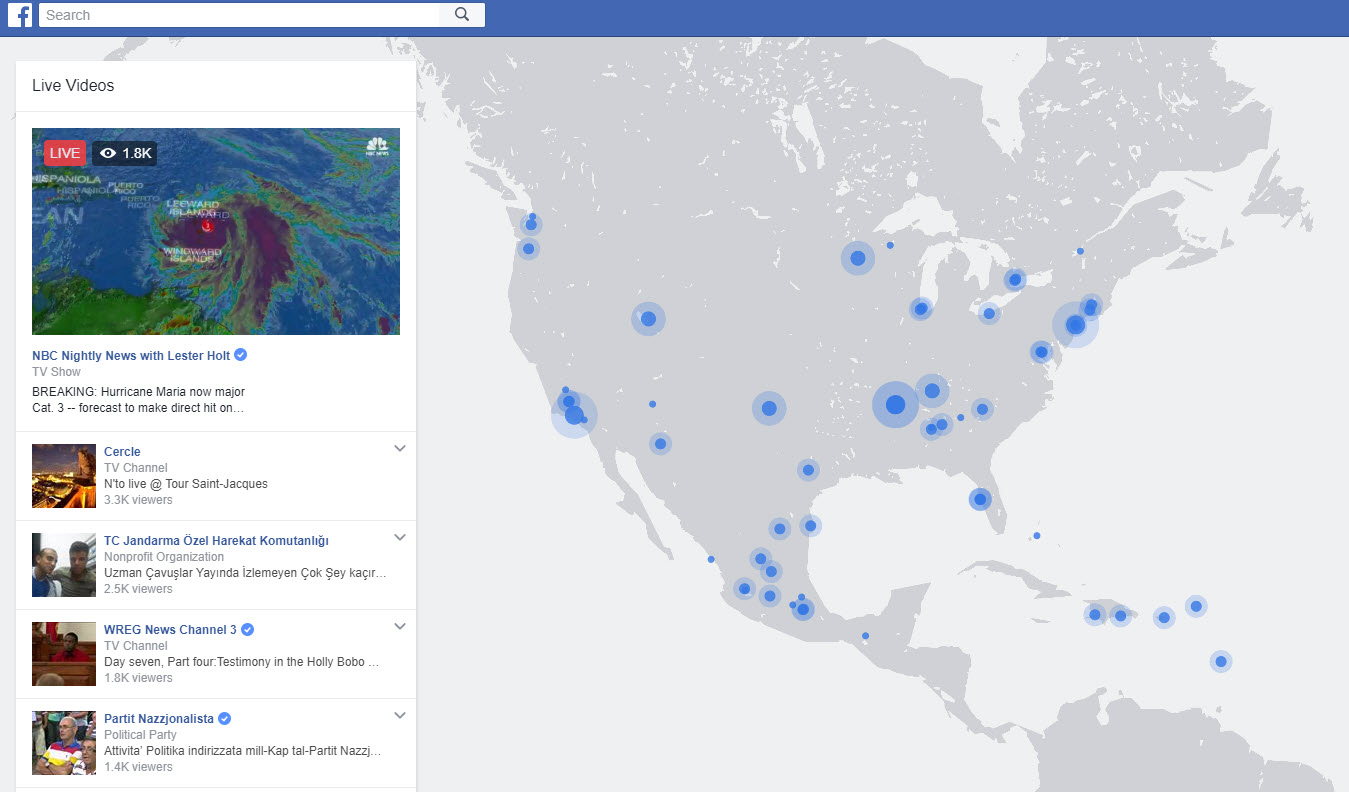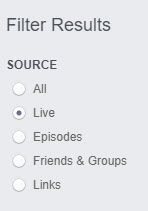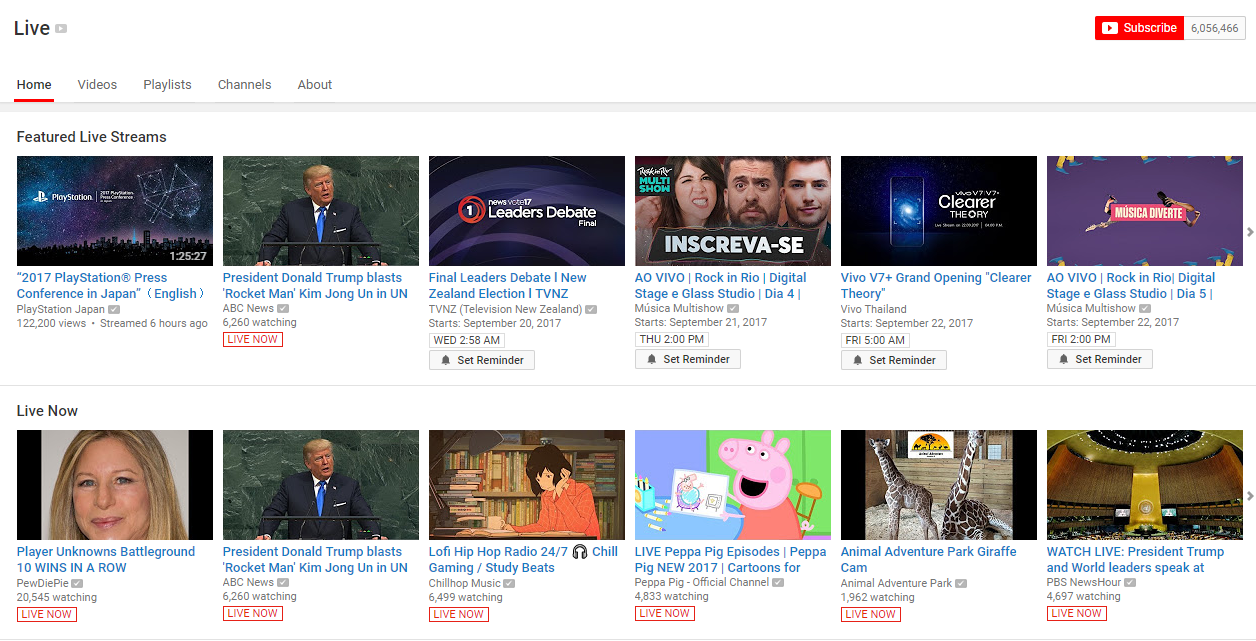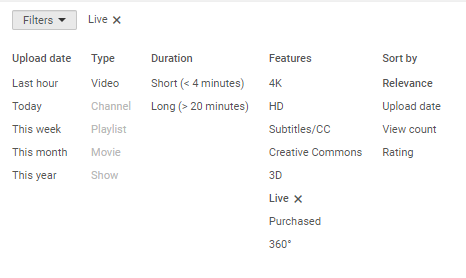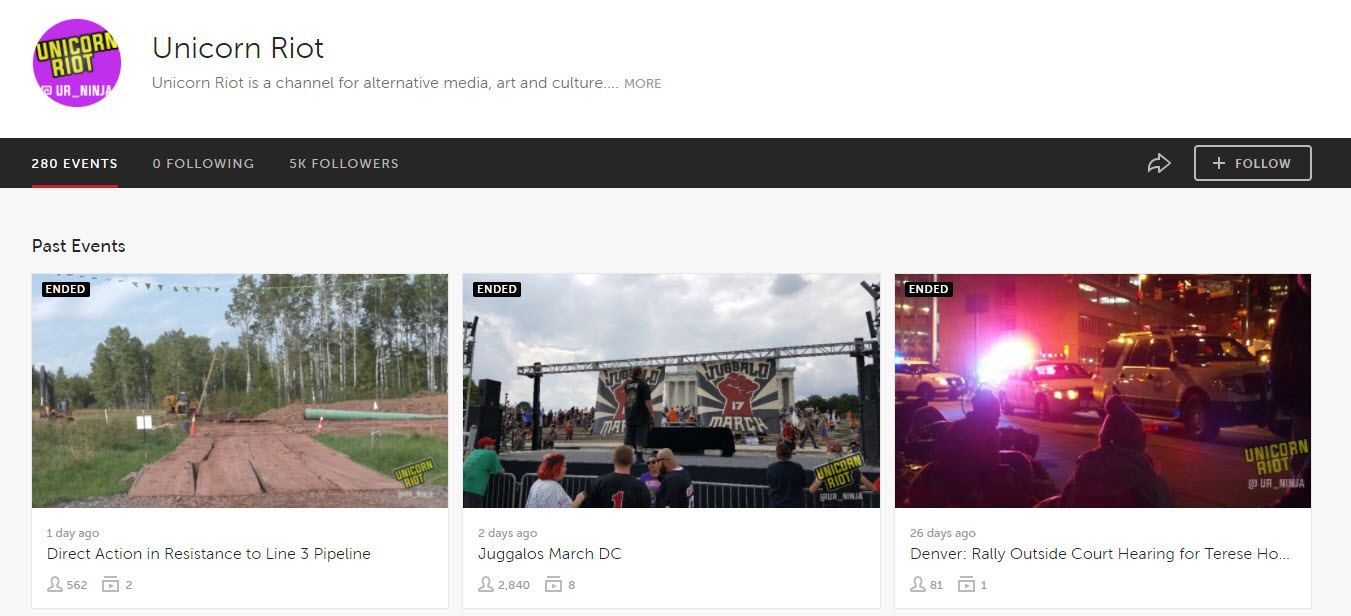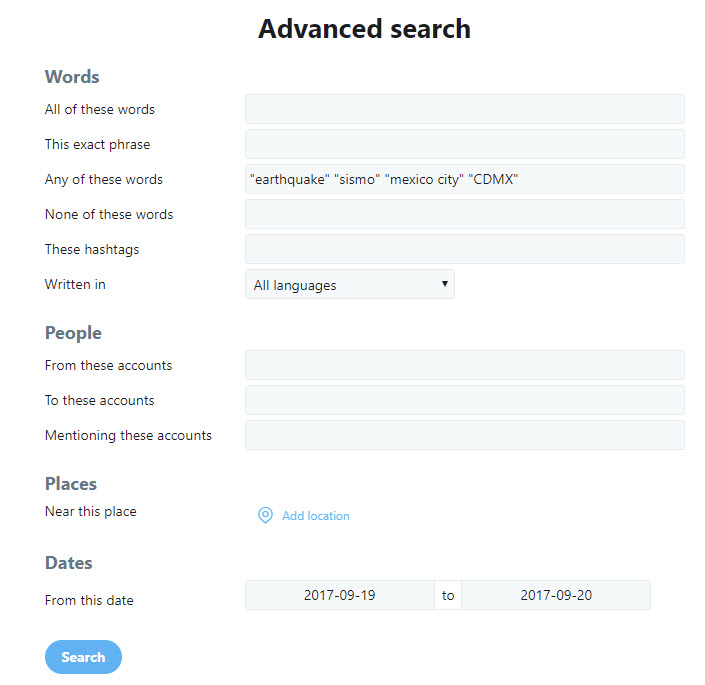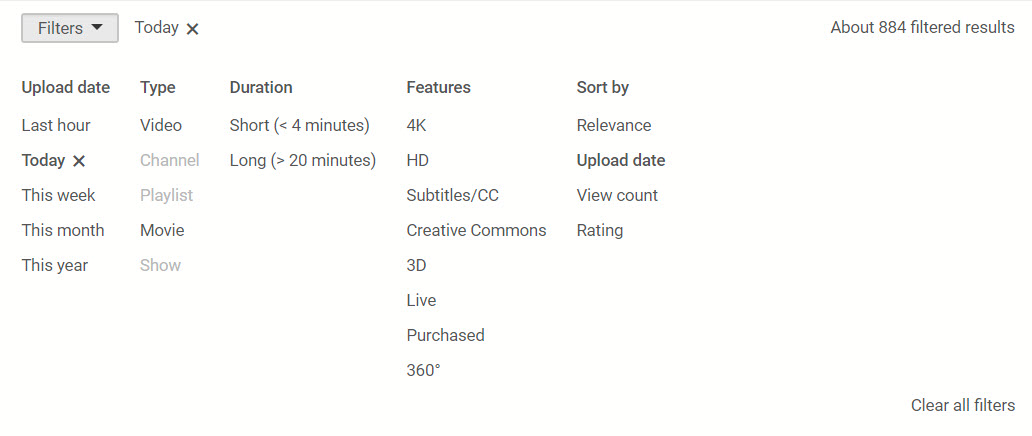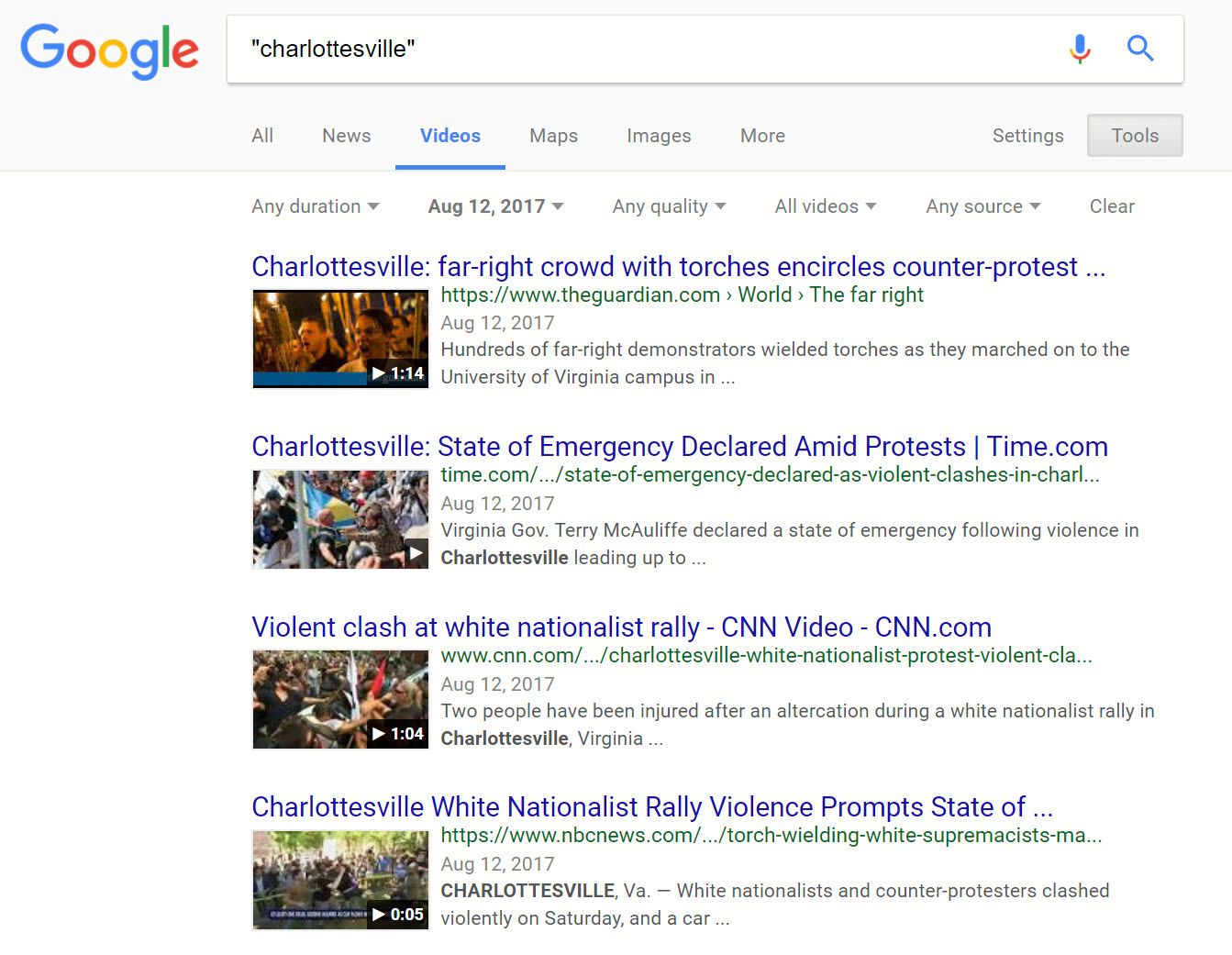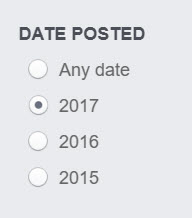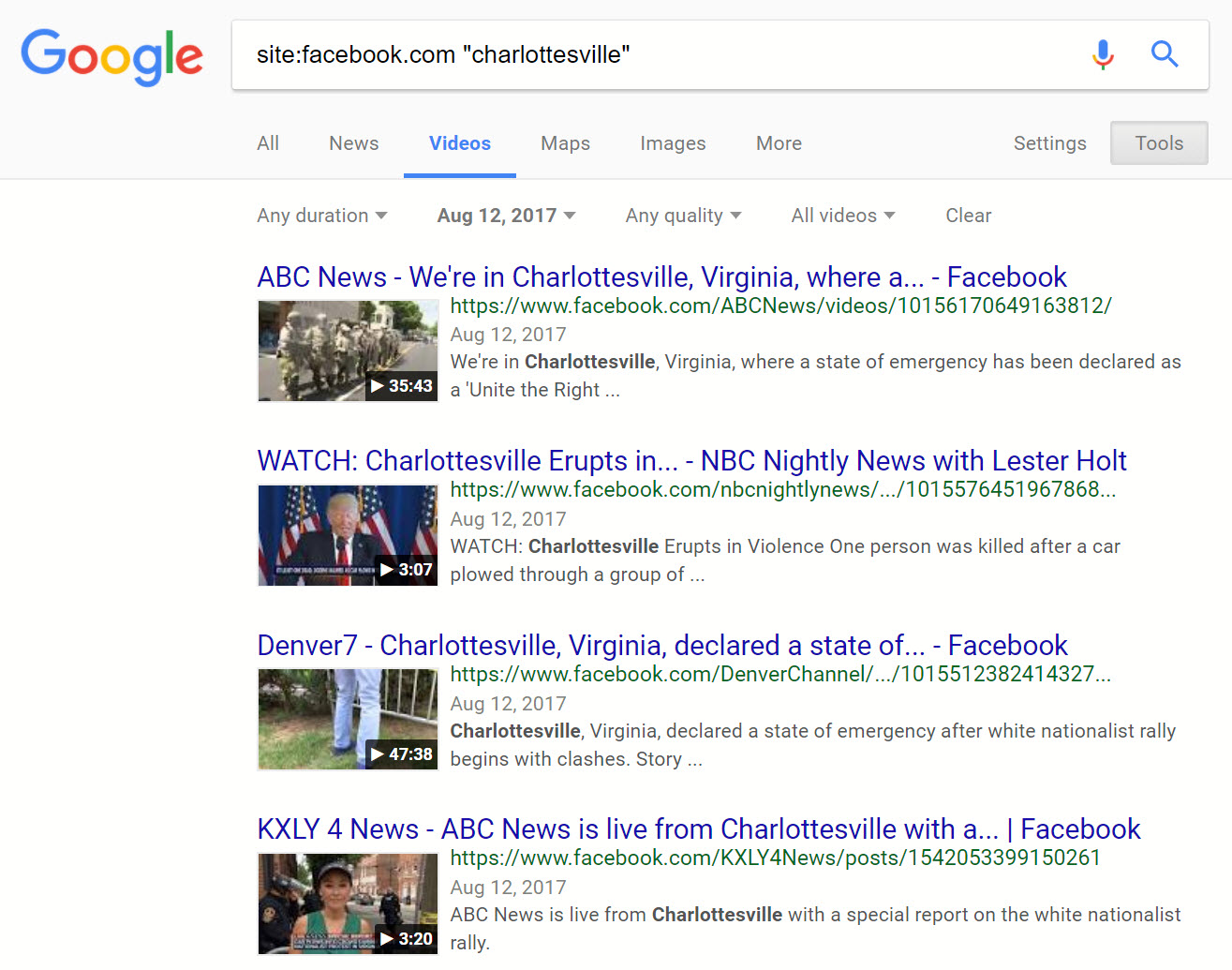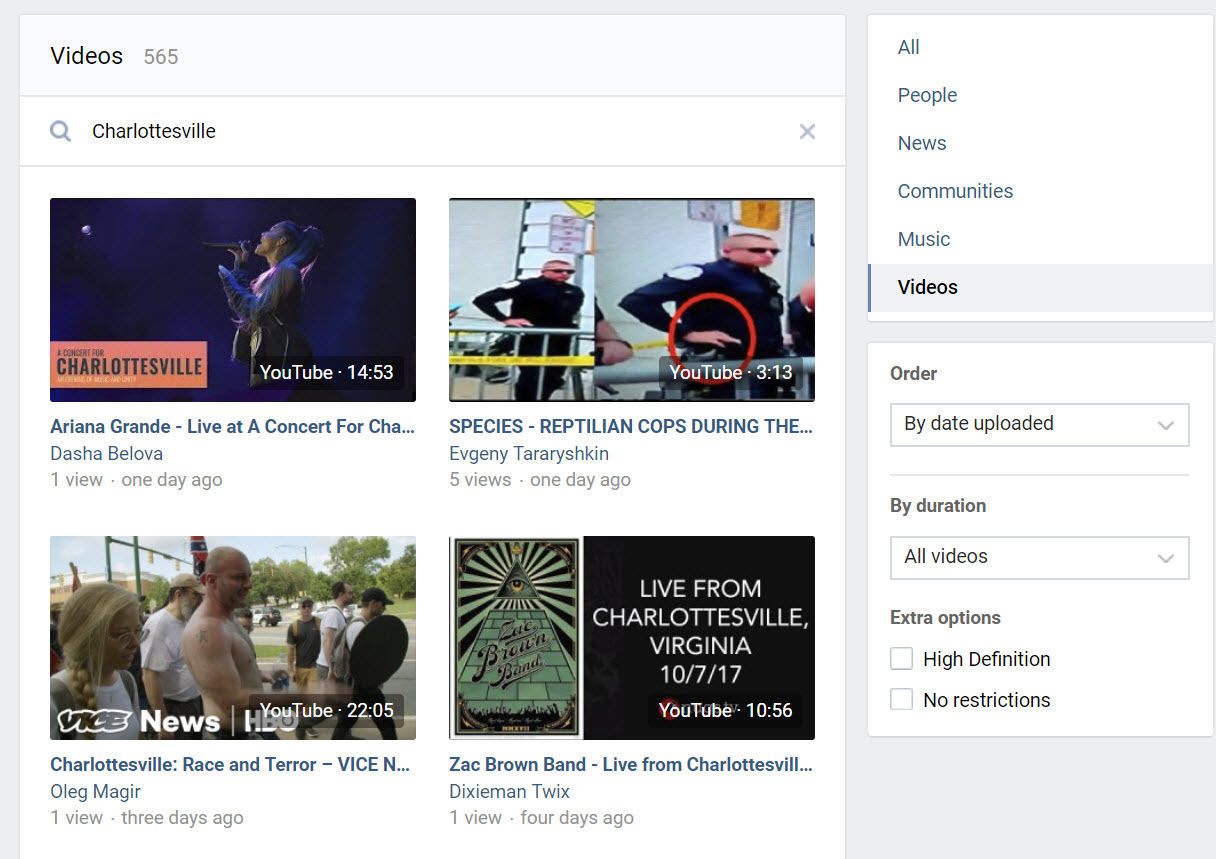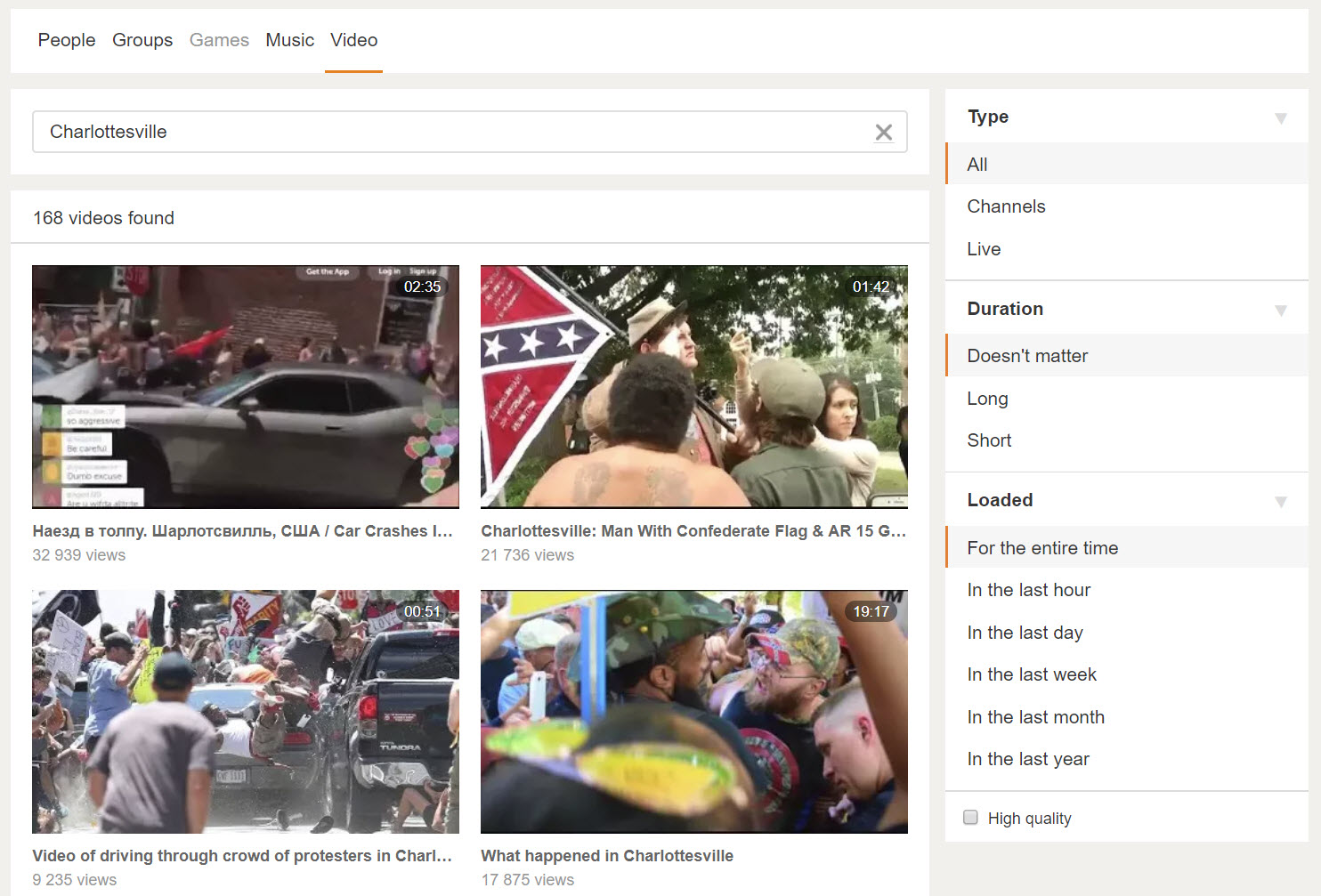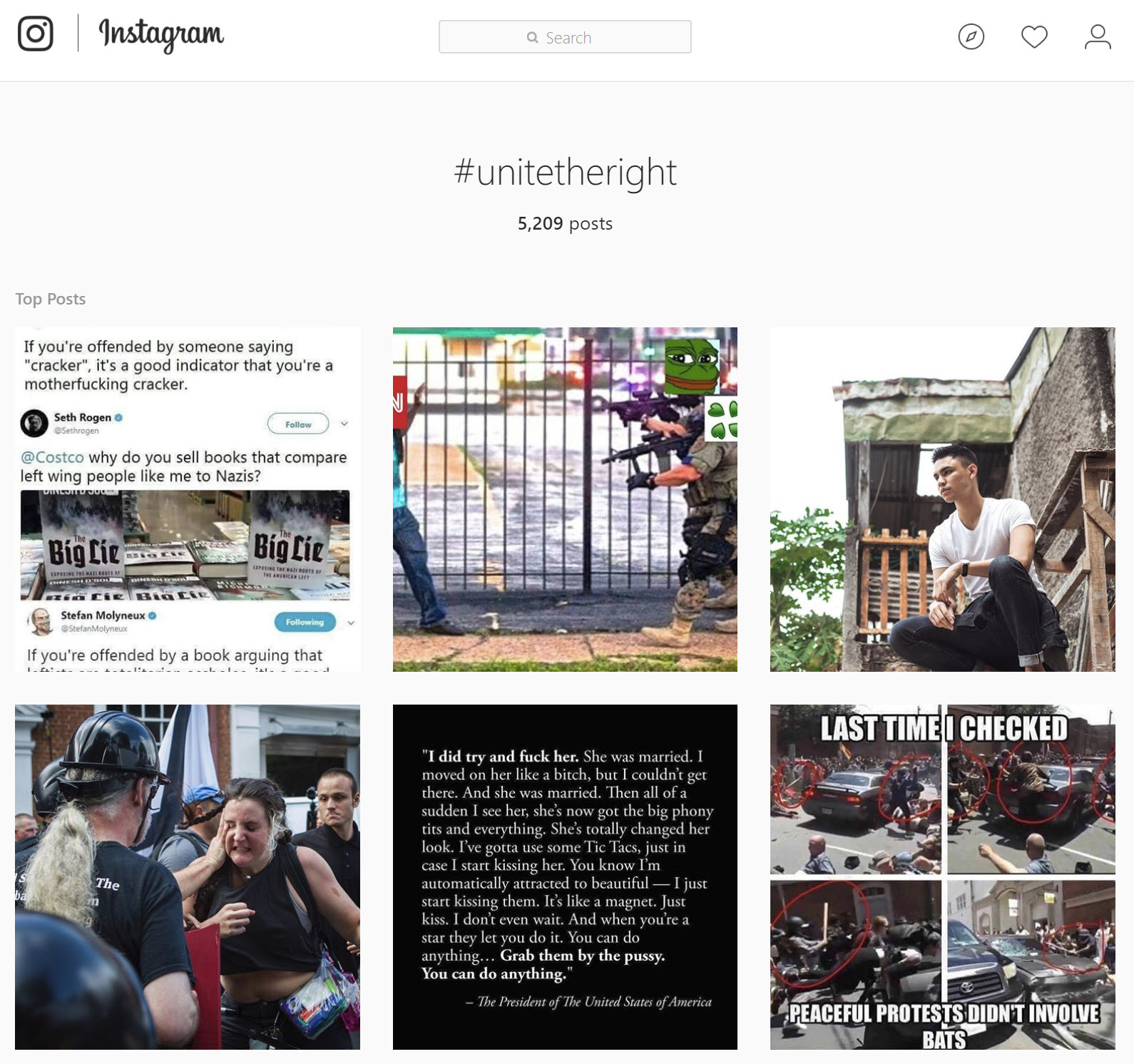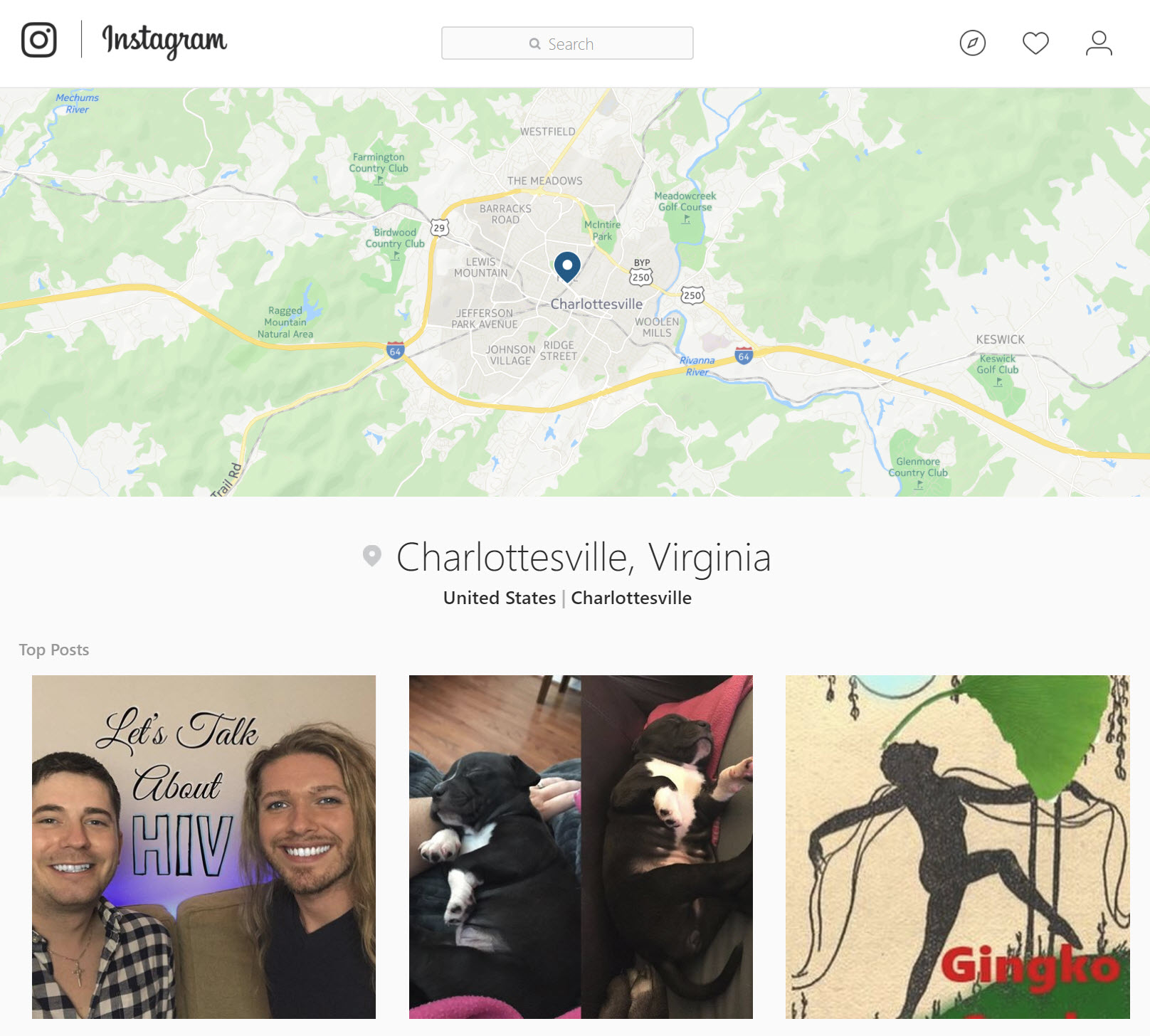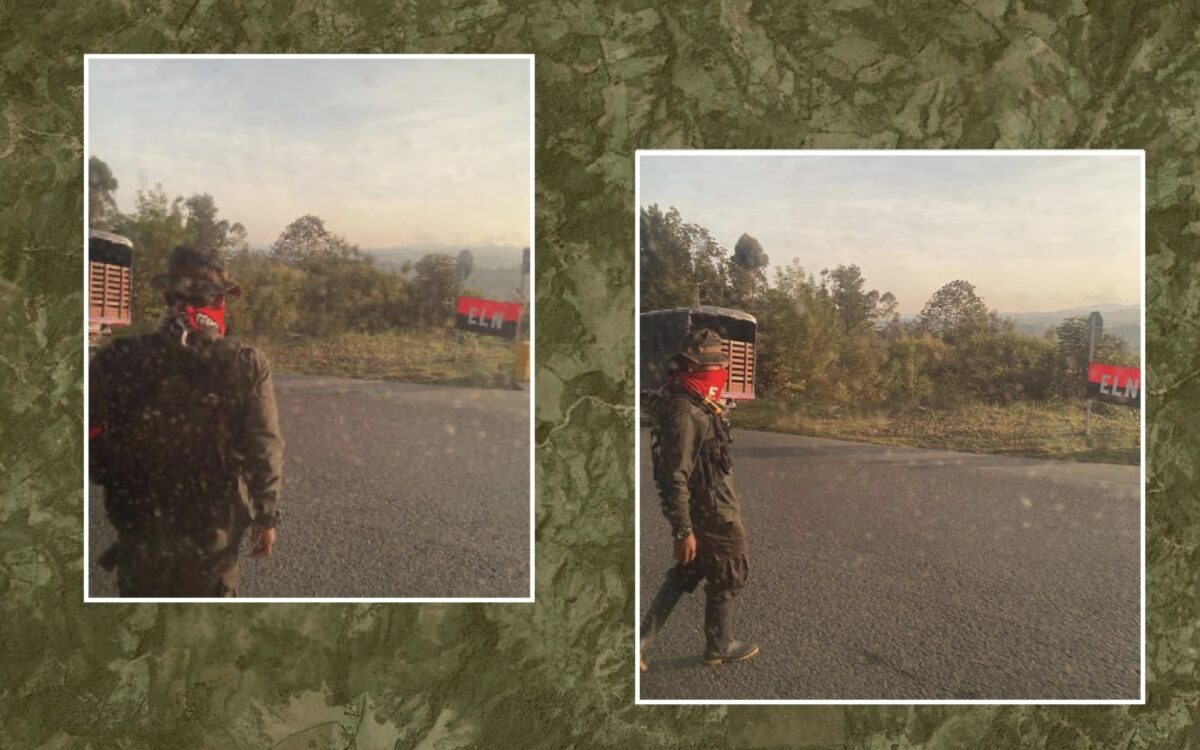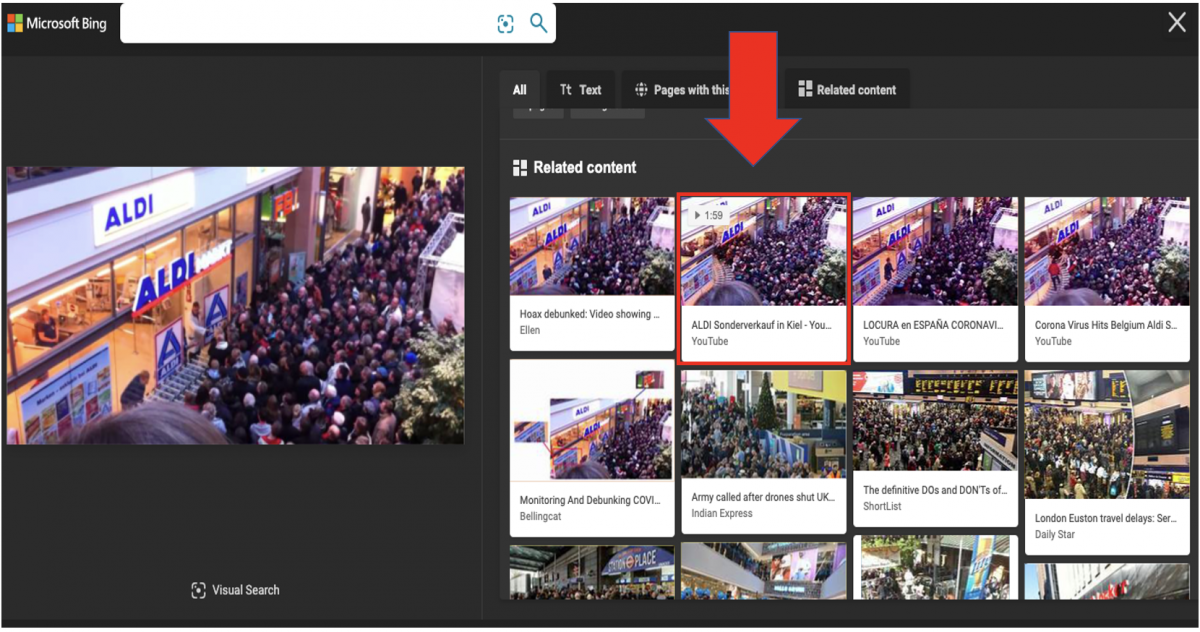How to Conduct Comprehensive Video Collection
Much of Bellingcat’s work requires intense research into particular events, which includes finding every possible photograph, video, and witness account that will help inform our analysis. Perhaps most notably, we exhaustively researched the events surrounding the shoot down of Malaysian Airlines Flight 17 (MH17) over eastern Ukraine. The photographs and videos taking near the crash in eastern Ukraine were not particularly difficult to find, as they were widely publicized. However, locating over a dozen photographs and videos of the Russian convoy transporting the Buk anti-aircraft missile launcher that shot down MH17 three weeks before the tragedy was much harder, and required both intense investigation on social networks and some creative thinking. Most of these videos were shared on Russian-language social networks and YouTube, and did not involve another type of video that is much more important today than 2014 — live streaming. Bellingcat has also made an effort to compile all user-generated videos of the events in Charlottesville on August 12, 2017, providing a database of livestreamed videos on platforms like Periscope, Ustream, and Facebook Live, along with footage uploaded after the protest onto platforms like Twitter and YouTube.
Verifying videos is important, as detailed in this Bellingcat guide, but first you have to find them. This guide will provide advice and some tips on how to gather as much video as possible on a particular event, whether it is videos from witnesses of a natural disaster or a terrorist attack. For most examples in this guide, we will assume that the event is a large protest or demonstration, but the same advice is applicable to other events.
First set of searches: livestreams
As you would imagine, the first videos that appear showing an event are the ones that happen in real time — livestreams. For a large demonstration — the example we are exploring in this guide — there will be a large numbers of participants or media members who livestream the event as it occurs.
For demonstrations, the following are the most popular platforms for livestreaming:
One of the newest platforms on this list, Facebook Live has gained quick popularity due to its enormous user base and ease of use. Finding live videos is quite easy — go to https://www.facebook.com/live, then click a blue dot in the location you are interested in. However, these videos only appear on the map while they are streaming.
To find previously-aired videos from Facebook Live, you have a couple of options. For one, you can go to the Facebook page of either an individual or page that you know aired a stream and search through their videos. For example, the previously streamed Facebook Live videos of popular American protest streamer Rebelutionary_Z can be found at facebook.com/RebZtv/videos.
Alternatively, you can search broadly for Live videos through the Facebook search function. Unfortunately, Facebook’s search function is not very easy to use, but you can find most results by filtering for only “Live” videos.
YouTube Live
Despite being a much larger video platform, YouTube Live is not yet a very popular livestreaming service for normal users, though it is used quite often for professional news outlets.
Like with Facebook, you can filter your search results to only show “Live” videos, whether they are still active or archived away.
Periscope
One of the most popular platforms for livestreaming is Periscope, which was purchased by Twitter in 2015. Like with other platforms in this guide, it is difficult to search for videos through the interface of the Periscope site–in fact, it is barely even worth using the search interface on the Periscope site, and it is much easier to search the site via Google or Twitter. For example, below we can search for some (but not all) of the Periscope livestreams from August 12, 2017, the day of the Charlottesville events, with the word “Charlottesville” in the title.
But this will not give you comprehensive results. Almost all Periscope streams are tweeted out at least once, either by their creator (as Twitter accounts are often linked to Periscope streams) or someone watching. It may be more useful to search a similar search string in Twitter along with Google, though you will likely have more results to sift through. The “Latest” and “Videos” options will give a number of good results–often people linking to or mentioning certain streams–but the recently-added “Broadcasts” option will give the most direct results. In the search string below, we are finding all broadcast streams with the word Charlottesville in the accompanying tweet and Periscope (including the URL) on August 12, 2017 (in Twitter searches, you have to enter the since: and until: dates as seen below to find all tweets sent on one day–August 12, 2017, in this case).
Once you find one video from the event you are looking for, search through the rest of the Periscope user’s videos–you will likely find a few more streams from the same place and time.
Livestream.com
One of the oldest services on this list, Livestream.com has waned in popularity since the rise of social media platforms offering livestreaming options, but it is still used by a number of groups and individuals. Thankfully, its search functions are much more robust than those of Periscope and some other platforms; however, they are still not perfect. Searching for videos posted on specific days is difficult, with the search filters much closer to that of YouTube, with “Past 24 hours,” “Past week,” and so on as filters, rather than a specific date range. Still, there are far fewer videos on this platform than YouTube and Periscope, cutting down the time in sorting through useful and extraneous results.
As with other platforms, previous livestreams are archived away for future viewing. As seen below, the popular Unicorn Riot channel, which frequently livestreams protests, has almost 300 archived videos of previous livestreams that are available for viewing.
Lastly, UStream was a popular streaming platform for protests, but after being purchased by IBM in early 2016, it has fallen off the map.
Second set of searches: day-specific filters on various platforms
Usually, the most popular videos from events are the ones published soon after they take place, but are not necessarily live streams. Most often, these videos pop up on the Twitter and Facebook streams of local reporters or correspondents, or ordinary people who happened to be witnesses. Our next set of searches after livestreams are videos posted on particular days–the one of the event being the most useful, of course–on the most popular video hosting platforms.
With the recent earthquake in Mexico City, we can find plenty of tweets from normal people showing the event by specifying only tweets on September 19, 2017 (the day of the earthquake). The search operator to find these videos is quote simple, using Twitter’s advanced search interface at twitter.com/search-advanced. From there, we should choose the “Videos” tab to only see videos uploaded to Twitter.
#Sismo CDMX pic.twitter.com/zobdrEVkAM
— Ernesto Muñoz Gomez (@mg_ernesto) September 19, 2017
MEXICO HOW MANY EARTHQUAKES WE HAVING WHEN I VISIT IN OMG pic.twitter.com/kkNe9nPuTt
— Keitaro (@KeitaroTime) September 19, 2017
Along with reporters at the scene:
Mexico City was just shaken by another earthquake 5.6 magnitude. These ppl were at a 4th floor gym pic.twitter.com/PTyk9rPd1a
— N. Parish Flannery (@NathanielParish) September 19, 2017
Tracking down these videos is a matter of knowing the right keywords to use and having the endurance to sift through all of your results. When looking for videos related to an event, don’t just search the obvious hashtags and topic words that will bring most of your results — for example with the August 12 protests, the terms #UnitetheRight and Charlottesville. Also use specific phrases, words, and hashtags that locals would use to find results from people who may not be trying to broadcast to a massive audience. Imagine what you, a local observing the event, would write to describe the event–perhaps you would use the city name, or more likely if you were only intending to broadcast to a smaller audience, just the place name most familiar with locals. A Charlottesville resident may not write globally-used hashtags or the word “Charlottesville” when posting a photograph or video from outside his or her house, but instead a more local reference, such as a street name or nearby landmark (e.g. a store or park).
Another obvious strategy is using local language and not just English. In the case of the Mexico City earthquake, you will find more success searching the Spanish word for earthquake, “sismo,” or common local terms for Mexico City, such as CDMX (short for Ciudad de México). Otherwise, you run the risk of only getting results for English-speaking tourists and reporters.
YouTube and Google Videos
For YouTube, you can use filters to only find videos posted in a certain time span. However, these filters are limited in not giving us the ability to search for a specific date or date range, rather just relative time spans related to when you are conducting the search. If you are searching for videos of an event within a week of its occurrence, then the “This week” filter should work fine.
However, if you are searching for videos after more time has elapsed from the event, then it may be more useful to search YouTube videos within Google, which has far more powerful search options than the YouTube user interface. In the search below, we asked Google to bring back results for every YouTube video (site:youtube.com) posted on August 12, 2017 (date parameter under “tools”) with the word “Charlottesville” (in quotation marks to bring back only results with that exact word).
By using the same search parameters in video.google.com, minus the YouTube specification, we will mostly find videos posted to news organizations who may not share their content on YouTube. There is no single platform that will collect all of the content from professional news organizations in one place, so your best bet is a combination of YouTube searches (for the news organizations that share their content across their official YouTube channel) and Google Video searches, which will detect video content on each site.
Searching for videos shared on a specific date on Facebook is much more difficult than with YouTube or Twitter. There are no search operators on Facebook to specify a date range, rather only years.
Much like with YouTube, we need to outsource or search operations to Google, due to the limitations of Facebook’s user interface. If we search on video.google.com for videos with the keyword “Charlottesville” on Facebook for August 12, 2017, we receive a number of useful results, similar to our date-specific search for YouTube videos.
Vkontakte and Odnoklassniki
There are a number of regional social networks that are also worth using, depending on the event you are focusing on. For this guide, we will focus on the two most popular regional social networks in countries of the former Soviet Union: Vkontakte (VK) and Odnoklassniki (OK). With both of these platforms, it is pretty easy to conduct video searches through the sites’ interfaces.
On VK, video searches are limited to sorting by upload date, but with far fewer videos available on other platforms, this does not make searching prohibitively time-consuming. After inputting your search term, select “Videos” (or “Видео” in Russian if you cannot change the language settings) to limit your results.
Odnoklassniki has roughly the same options as Facebook in video searches, as it includes the choice to include rarely-filmed live videos from Odnoklassniki. Just as with VK, conduct a search on the site (account creation may be required), and then select “Video” to filter results.
Unless the event you are concerned with took place in a location with a number of VK and OK users, it may not be worth the effort to search on these platforms for new video footage, as the bulk of clips on these sites are re-shared from other sources.
Third set of searches: hard-to-find Snapchat and Instagram content
Snapchat and Instagram are two very common sources for videos, but also two of the most difficult platforms to trawl for clips. Neither has an intuitive search interface that easily allows researchers to sort through and collect videos.
Searching for video clips on the Instagram website is almost useless, unless you are lucky or searching specific locations via geotag. By just searching a search term or hashtag, there is no way to sort through only video results, or to search within a specific date range or video length.
You can sort through the most recent videos with a specific search term or hashtag, but for popular terms like a city name, this will give you far more results than you need. Searching by geotag can be useful, but will bring back scattershot results–not all videos have hashtags, and even those that do may not use the one you are searching for. For example, the hashtag for Charlottesville, Virginia will give you some results, while the hashtag for a certain park or street name will give you different ones. Unless you are using a paid service like EchoSec, there is no way to map out the results to measure proximity.
Yet again, Google is often the best tool we have to search for videos on a social platform. By using the same search operators described with other sites, we can find video results for specific search terms and date ranges–but with very limited results.
There is little doubt that there were far more than five videos with the word “Charlottesville” posted on Instagram on the day of the protests, but these are the only results given by Google. Unfortunately, searching for videos on Instagram is an arduous task, and you may have better luck searching for mentions of Instagram videos on other platforms, such as Twitter, rather than on the Instagram platform itself.
Snapchat
Unless you use an Android emulator (and even if you do this, there is limited success), there is currently no way to search for Snapchat videos on a laptop or desktop computer–you are limited to using the Snapchat app on your tablet or phone. From within the Snapchat app, just search for a keyword or location in the search function to find Snapchat stories. Like with Instagram and Facebook, this content may be restricted by the privacy settings of users.
Conclusion
It is increasingly vital for journalists and researchers to be able to find and verify (see this guide) videos when writing on events. While the most explosive and interesting videos often find a spotlight on them thanks to reposts and shares on various social media platforms, often you can find overlooked details in harder-to-find videos on more obscure platforms.
If there are any video platforms or searching methods that were overlooked or not included in this guide, please leave your thoughts in the comment section, or tweet to @bellingcat.
